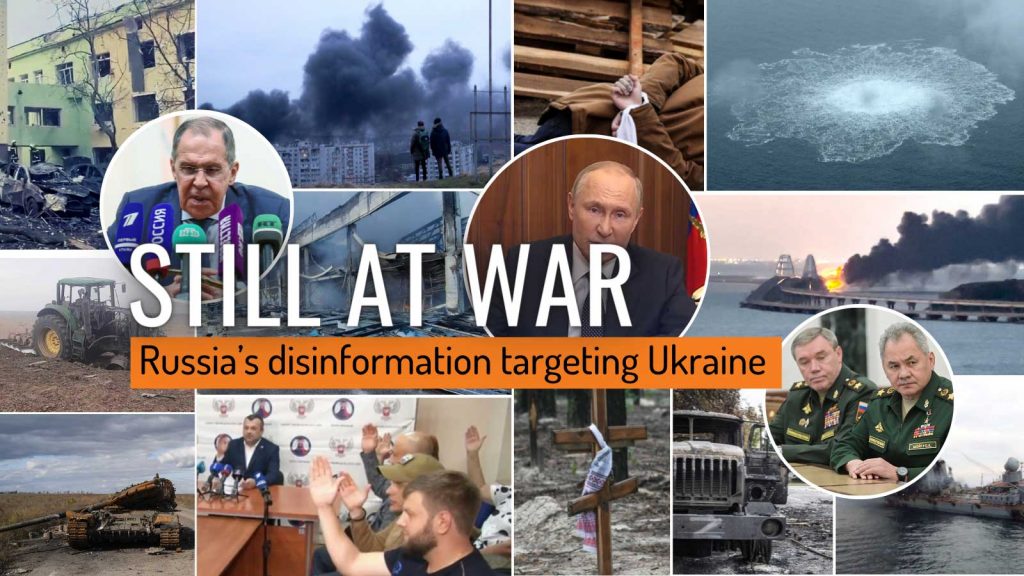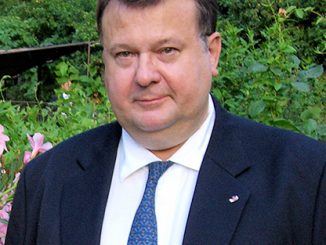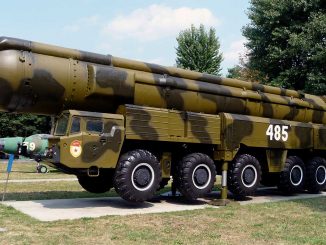Russia deployed disinformation targeting Ukraine throughout Russia’s war of aggression to advance its geopolitical goals and distract the World from the atrocities Russia has committed... Indeed, Russia’s hostility toward Ukraine did not start last February.
Source — EUvsDiSiNFO — November 7, 2022 —

On 24 February 2022, Russia launched an unprovoked full-scale war of aggression against its peaceful neighbour Ukraine. In the weeks and months that followed, Ukraine showed the world the true meaning of courage and perseverance, blunting the initial invasion and eventually even reversing the tide.

Most of the world saw Russia’s mask drop. Less than a week after the invasion, 141 out of 193 United Nations member countries voted in favour of a resolution condemning Russia’s decision to invade and demanding that Russia withdraw all its military forces from the territory of Ukraine.
Russia’s hostility toward Ukraine did not start last February. Russian self-described information weapons prepared the information battleground for years prior to Russia’s kinetic attack. Just as the Russian invasion of Ukraine did not go as the Kremlin had intended, so its loyal disinformation pundits and their amplifiers had to twist and turn their false narratives about the war to keep feeding the flames of uncontrolled aggression.
EUvsDisinfo has closely followed their development. With this article, we aim to recap and examine some of the major turning points of the pro-Kremlin disinformation shrouding Russia’s war of aggression against Ukraine. We will also offer a quick glimpse of the key disinformation narratives Russia has sustained throughout the war, regardless of developments on the battlefield.
‘Three day war’
The kinetic phase of the current war started with the grand lie of a ‘special military operation’, with Putin himself implying the limited character of his military adventurism and pro-Kremlin pundits preparing to celebrate a Russian victory that was to come in mere days. Now, after months of remarkable Ukrainian resistance, a general mobilisation in Russia, and illegal attempts to annex occupied territories, it has become abundantly clear that Russia’s ‘three day war’ is not limited either in scope or time.
Once it was clear that the invading Russian troops would not be greeted as liberators, pro-Kremlin disinformation peddlers quickly sought to move the goalposts for success mid-war. The objective for the invasion was no longer some abstract ‘de-Nazification’, but the need to liberate the eastern parts of Ukraine to save its people from Kyiv’s oppression. This need was quickly justified by flooding the pro-Kremlin information ecosystem with false accusations of Ukraine committing genocide against its own people.
Pro-Kremlin propagandists have increasingly reverted to genocidal rhetoric at times amounting to hate speech. Spreading disinformation to de-humanise Ukraine and incite violence has been the Kremlin’s approach since day one of the war to sow terror and justify Russia’s war crimes in Ukraine.
Disinformation shrouding war crimes
As the tide of war started to turn, Russia ramped up the use of its military assets to target civilian infrastructure across Ukraine. Meanwhile, its disinformation apparatus sought to deny, dismiss, and distract the world from the crimes the Kremlin was committing.
When Russia attacked a maternity hospital in Mariupol, pro-Kremlin disinformation outlets dismissed the victims as Nazis. When Russian missiles struck a train station full of civilians in Kramatrosk, Russian spin-doctors falsely blamed Ukraine for killing innocent people fleeing the horrors of war. When Russian pilots launched missiles at a shopping mall in Kremenchuk, Russia denied the attack, claiming to strike only military targets. When it struck several civilian objects in Vinnytsia, it was once again because Nazis were hiding there.
When Ukraine liberated more and more territories from Russian occupation, the world learned yet another shocking truth about the actions of Russian ‘liberators’ in Ukraine. Perhaps the most eye-opening example of the indiscriminate wanton brutality of the invading Russians was revealed when Ukrainian forces liberated the town of Bucha. Images of civilian bodies killed execution-style and strewn across the streets of Bucha quickly travelled the world.
The evidence of atrocities amounting to war crimes was irrefutable. But for pro-Kremlin disinformation outlets, evidence means little. The Kremlin quickly sought to occupy the information space with contradictory ‘explanations’ of the events in Bucha – alleging a Ukrainian provocation, claiming the atrocities are staged, blaming the West, and linking to conspiracy theories. The goal, however, was clear – to deploy disinformation to conceal possible Russian war crimes.
A similar story unfolded when Ukrainian forces liberated the city of Izyum and discovered hundreds of civilian graves as well as several heinous torture sites operated during the six months Russians controlled the city. The initial reaction was straight from the Kremlin’s disinformation playbook – flat-out denial and claims that any evidence found is fake. Yet compared to Bucha a few months prior, as the case of Izyum unfolded, it became clear that the pro-Kremlin disinformation ecosystem is increasingly unashamed about crimes such as targeting civilian infrastructure. Instead, it considers them methods to instil fear and boast about Russia’s might.
Broken record
At the end of the day, the pro-Kremlin disinformation ecosystem is not particularly inventive. It thrives on repetition and recycling the same lies over and over again. The Kremlin’s cycle of death and lies spins almost the same way every time. Distract from the issue, deny the evidence, demonise the target, shift the blame, and repeat from the start. After all, blaming your adversary of that which you are guilty yourself is one of the oldest tricks in the Kremlin’s playbook.

Disinformation to salvage military setbacks
Since 24 February, we have witnessed a few significant turning points in Russia’s war of aggression against Ukraine. Most have been decidedly to Russia’s disadvantage. Yet the pro-Kremlin disinformation ecosystem sought to salvage any military setbacks Russia experienced on the frontlines. For example, commentators regularly repeat the claim that Russia is deliberately slowing down its operations to minimise civilian casualties.
After the successful Ukrainian counteroffensives in the east in early September, the leadership in the Kremlin scrambled to distract the masses from the losses at the front and turned to political escalation, announcing the mobilisation in Russia and the referendums to annex occupied territories. Disinformation on these two topics was readily propagated across the pro-Kremlin disinformation ecosystem, particularly on Russian state TV.

On one hand, Russian state-controlled outlets sought to downplay the success of the Ukrainian counteroffensive in the Kharkiv region. On the other, they had to ‘sell’ the mobilisation to the Russian population. The disinformation solution was rather devious – link the mobilisation to the annexation while ramping up thinly veiled threats and scaremongering rhetoric. The Kremlin’s move was clear. First, hold illegitimate referendums to declare that occupied territories in Ukraine are now part of Russia. Then portray the Ukrainian counteroffensive to liberate the territories as an attack on Russia and use it as a rallying call for mobilisation.
Burning bridges
Another major blow to Russia’s pretence that all is well on the front came on the morning of 8 October, when an explosion engulfed the hugely symbolic Kerch Strait Bridge in flames. While some disinformation outlets tried to distract from the extent of the explosion, most echoed Putin’s accusations of terrorism against Ukraine for deliberately attacking Russia’s critical infrastructure. Likewise, pro-Kremlin outlets flocked to emphasise the symbolic meaning of the bridge, stirring up emotions and using the explosion as a rallying cry for indiscriminate retaliation(opens in a new tab) against all Ukrainians. And, of course, there was a good deal of blaming the West for the explosion.
It is likely that pro-Kremlin disinformation outlets were preparing the information environment for the missile attacks striking civilian targets across Ukraine only a few days later. The disinformation rhetoric sought to portray these heinous attacks as righteous retribution, although there are indications that the missile attacks were prepared before the explosion on the Kerch Strait Bridge.
Pro-Kremlin disinformation pundits have since dropped any pretence that Russia only strikes military targets and now openly call all Ukrainians terrorists who deserve eradication. They publicly call for ‘de-electrifying’ Ukraine, basically advocating that the Russian military commit war crimes by striking civilian targets. The mainstream disinformation outlets praise the targeting of Ukraine’s infrastructure and energy systems, and presenters are almost jubilant when reporting the pain and suffering Russia has inflicted on Ukraine.
Still, the ersatz joviality of Russian talking heads could not altogether hide the scope of Russian military setbacks in Ukraine. At some point, even denial and distraction could not obfuscate the truth, so pro-Kremlin propagandists turned to look for a more unassailable justification for the military failures. Following the internalised Kremlin’s mantra – when in doubt, blame the West – they did not look too far. Consequently, now the main disinformation narrative to justify any losses on the frontlines is that Russia is fighting NATO and the collective might of the West in Ukraine.
In more recent weeks, pro-Kremlin outlets and their amplifiers have also engaged in signalling the Kremlin’s openness for negotiations. Yet this is clearly reminiscent of the ‘fight and talk’ tactic often employed by other aggressors to strong-arm better positions at the negotiating table. It is hard to take any calls for peace seriously when pro-Kremlin propagandists demand the eradication of Ukraine in increasingly menacing tones while Russian missiles and kamikaze drones rain down on Ukrainian cities, targeting civilians and critical infrastructure.

There is one unifying characteristic of pro-Kremlin disinformation narratives about the progress of Russia’s war of aggression. From Putin’s speech launching the war on 24 February, to readjusting military goals, to announcing mobilisation in Russia and attempting to annex occupied territories, Russia’s world-view is defined in terms almost diametrically opposed to their original meaning. Occupation is liberation, and self-defence is invasion. We have called this the Kremlin Newspeak because of its eerie similarity to the fictional language in Orwell’s seminal novel 1984.
Crippling the original meaning of words is just one form of manipulation. Another, equally insidious, is the censorship and decimation of independent media in Russia. And not just well-established and renowned news sources like Novaya Gazeta were subjected to censorship and eventual suspension. Popular social media platforms like Facebook and Instagram were also taken offline in Russia, with authorities labelling their parent company Meta as an extremist organisation.
But stifling free thought is harder than even the Kremlin anticipated. People always find ways to circumvent restrictions, engaging in a sort of cat-and-mouse game between censors and the people. And even some long-serving pro-Kremlin pundits eventually decided to quit lying and defect from the pro-Kremlin disinformation ecosystem, exposing possible cracks in the seemingly monolithic façade of the Kremlin’s propaganda apparatus.
Setting sights beyond Ukraine
Not all pro-Kremlin disinformation throughout the war has directly targeted Ukraine. The Kremlin seems to have realised that most of the world is behind Ukraine, so most of the world has become a target for Russian ‘information weapons’. Four topics have stood out above the rest: food security, energy, biological weapons, and nuclear threats.
Once it was clear that the war would last longer than initially planned, pro-Kremlin disinformation outlets mobilised to dissuade the international community from supporting Ukraine. One particularly heinous tool was using food as a weapon and targeting the most vulnerable communities, essentially holding them hostage.
Most prominently, the pro-Kremlin disinformation outlets sough to convince the world that the West is to blame for deteriorating food security across the globe and the rise of prices on basic commodities like wheat or sunflowers oil. Russia actively tries to convince global audiences that international sanctions imposed on Russia are to blame for the surge in food and fuel prices. However, the truth is that these sanctions have exemptions regarding export and transactions related to food and agricultural products, and the war Russia started in Ukraine is the real reason for the food shortages and rising energy prices.
Exploiting primordial fears has always been a highly favoured tactic by the Kremlin. And if that fear can be used as a distraction, all the better. So it was no surprise that pro-Kremlin disinformation outlets sought to instrumentalise post-pandemic fears and global susceptibility to conspiracy theories by dusting off a previously deployed false narrative about clandestine Western-funded biological weapons research facilities. This was a clear attempt to provide both justification for launching the war and a distraction from it. The fact that biological research is not banned was of no consequence to pro-Kremlin disinformation pundits.

In case the fear of biological contaminants spreading from Ukraine failed to strike horror in the hearts and minds of global audiences, pro-Kremlin disinformation outlets also doubled down on amplifying the Kremlin’s increasingly belligerent nuclear rhetoric. Throughout the war, the Kremlin’s manipulation and disinformation machine has used a deep-seated and very reasonable fear of a nuclear disaster to advance its political and military goals in Ukraine. It spread accusations of Ukraine preparing nuclear provocations in the Zaporizhzhia nuclear power plant, amplified Putin’s thinly veiled threats to use nuclear weapons in response to Ukraine’s attempts to liberate the occupied territories, and, most recently, drummed up unsubstantiated allegations of Ukraine developing a ‘dirty bomb’.
The Kremlin is keenly aware of its biggest stick and its biggest carrot. For Russia, the two are one and the same – energy resources. Be nice to Russia and it will sell you cheap gas; oppose it and Russia will freeze you by cutting off your supply. So the pro-Kremlin disinformation outlets quickly turned to spreading fears about freezing Europe in the coming winter. The manipulative narrative is straightforward – stop aiding Ukraine and Russia will send the gas flowing, allowing European states to keep energy prices down. And if you dare think about alternative sources of fossil fuels or the means of their delivery, be aware that even undersea pipelines can explode.
Spreading and exploiting fears is one of the most common tactics in the pro-Kremlin modus trolleradi. And in Russia’s war of aggression against Ukraine, all weapons are deemed fit for purpose by pro-Kremlin propagandists. After the war triggered an outflow of refugees from Ukraine, pro-Kremlins pundits sought to exploit existing fears of migration and migrants, particularly targeting Ukraine’s neighbours such as Moldova or Poland who welcomed Ukrainians fleeing Russia’s war.
The pro-Kremlin peddlers of fear and hate also sought to portray the invaders as the protectors of ‘traditional values’ against the looming threat of the unholy alliance between the LGBTIQ+ community and the devil himself. The disinformation narrative of protecting traditional values is steeped in overt homophobia, often teetering on the brink of outright hate speech. In line with the usual vaguely schizophrenic cognitive dissonance that often prevails in the pro-Kremlin information sphere, disinformation outlets tried to use the LGBTIQ+ community both as the target and the instrument of manipulation at the same time.
One of the most overt methods used by the Kremlin to instrumentalise these fears, insecurities, and proclivity for conspiracy theories is using Russian diplomatic accounts on social media, particularly Twitter and Facebook, to spread pro-Kremlin disinformation to global audiences. Since the platforms have largely verified these accounts as real, this seeming legitimacy seeks to give disinformation more credibility, while their considerable follower bases serve to amplify the messages. Russian government and diplomatic accounts on social media are an integral part of Russia’s disinformation and propaganda ecosystem.
The Russophobic Nazi glue that holds it all together
The pro-Kremlin disinformation ecosystem sought to adapt to the changing realities on the frontlines and the political whims in the Kremlin, but there were also a few fundamental overarching disinformation narratives that have not changed throughout the war.
From the war’s first day, one disinformation narrative stood head and shoulders above the rest – the false allegation that the regime in Kyiv and by extension the whole of Ukraine is a Nazi state. The constant portrayal of Ukraine as Nazi is no accident. It is a carefully crafted and cultivated disinformation narrative that has been deployed to trigger a deep-rooted hatred and channel it toward supporting the criminal actions of the Kremlin, including launching a brutal war of aggression.
Consequently, this heinous disinformation narrative is predominantly targeting Russian domestic audiences while trying to vilify Ukraine in the eyes of the world. The pro-Kremlin disinformation ecosystem has used it consistently throughout the war, whether it be to justify deliberate attacks on Ukrainian civilians or to try to discredit Zelenskyy’s government or the Ukrainian Armed Forces in the eyes of the world. Most notably, the unfounded accusations of Nazism and genocide skyrocketed in the months and weeks leading up to the war.
The pro-Kremlin disinformation narrative about ‘Nazi Ukraine’ is strongly interconnected with constant accusations of ‘Russophobia’ allegedly spreading in both Ukraine and the West. This term has become a highly favoured label for pro-Kremlin pundits who readily hang it on anyone criticising Russia or its brutal war of aggression in Ukraine. Whether it be the EU and its Member States cutting the access to Russian disinformation channels or the EU condemning Russia’s war and imposing sanctions, in the Kremlin’s view, all these actions are guided by ‘Russophobia’.
Another element that the pro-Kremlin disinformation ecosystem has peddled for years and sustained throughout the war is the unfounded allegation that Ukraine has no legitimate statehood because it is controlled by the West. Often this control is embodied by a cryptic group of shadowy puppet-masters known to the Kremlin as the Anglo-Saxons. Again, the allegation is wholly unfounded, but the disinformation narrative of Western control has played well to conspiracy-prone audiences and has often been deployed to disparage Ukraine’s sovereignty.
Finally, pro-Kremlin disinformation outlets and their amplifiers also sought to deny, deflect and dismiss the impact of Western sanctions rightfully imposed on Russia for launching an unprovoked and unjustifiable war against Ukraine.
Admittedly, this narrative has been something of a tightrope walk for pro-Kremlin pundits who have had to balance between boldly claiming that the sanctions have no impact on the mighty Russian economy and blaming the same sanctions for being an instrument of illegal pressure against Russia. But the overall disinformation narrative about sanctions has always been clear: sanctions are hurting the West more than Russia. The Kremlin designed this devious lie to dissuade the world from supporting Ukraine in its righteous fight for freedom and sovereignty. Don’t be deceived.










